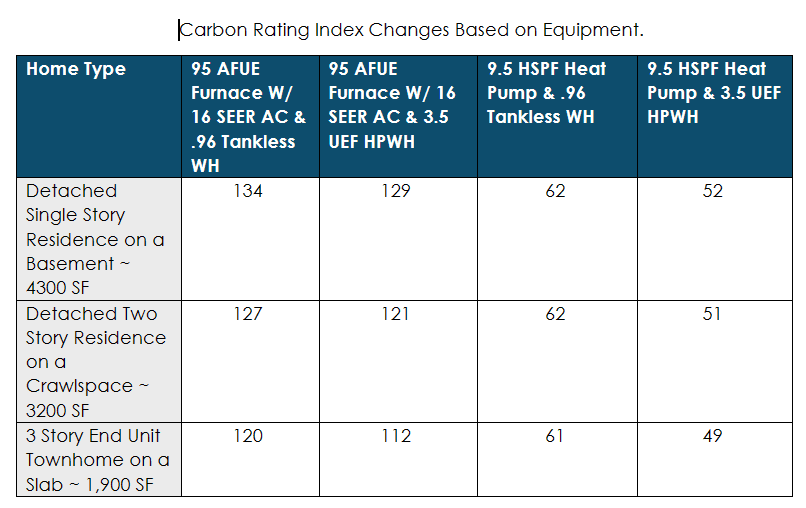RESNET® Carbon Rating Index

RESNET introduces a carbon rating index for assessing operational carbon emissions in residential construction.

Published January 29, 2024
Collaboration Is Key
As part of RESNET’s ongoing efforts to help drive new home construction to net zero energy homes, RESNET has developed the CO2e Rating Index along with support and cooperation from the National Resources Defense Council (NRDC), the Consortium for Energy Efficiency (CEE), the California Energy Commission (CEC), and the National Renewable Energy Laboratory (NREL). This latest rating index provides all stakeholders in residential building decarbonization with an easily identifiable metric to assess the operational carbon emissions from a new construction home or existing home improvement.
This metric works on a similar 0 to 100 scale as the Energy Rating Index but provides a comparison between energy emissions rather than energy consumption. The CO2e Rating Index is based on electricity grid emissions estimated by the NREL Cambium data set. The Cambium data set is the most accurate and updated database of hourly emission rates and provides multiple scenarios based on potential economic and technological forecasts. The hourly emission rates from Cadmium are multiplied by the hourly energy usage from the HERS Rating to provide annual emissions for both the HERS Reference and HERS Rated Home. Since the HERS Carbon Index is based on the same inputs and data collection as the Energy Rating Index no additional inspections or data input are necessary to generate the Carbon Rating Index for a home.
Mixed Fuel vs. All-Electric Equipment
To give an idea of how the RESNET Carbon Rating Index changes between different homes and different equipment EnergyLogic has pooled together this example on a set of homes designed to meet the 2021 IECC in the Front Range of Colorado. In this example, we are comparing the impact of the Carbon Rating Index from mixed fuel and all-electric equipment.

The Bottom Line
From this small example, we can see that as homes transition from using entirely natural gas for space heating and water heating to all-electric space and water heating the Carbon Rating Index drops dramatically. Showcasing the potential that electrification has for decarbonizing the housing stock.
If you have more questions about the Carbon Rating Index and how it might help your business in selling homes or reporting your efforts to other stakeholders, please contact your business development manager directly.
Section Header
If your content is longer than the grey sidebar on the right, add it here to maximize space (so that there isn't a long grey sidebar that is empty. If your content is not long enough to pass the "housing tides" button, just erase this section and only use the upper sections.
Morbi finibus nisi eu eleifend semper. Etiam pretium quam ut diam tempus, non fringilla augue dignissim. Sed id volutpat tortor. Etiam vel elit quis purus ultrices lobortis. Quisque ut turpis eget nisl rutrum fermentum quis at metus. Orci varius natoque penatibus et magnis dis parturient montes, nascetur ridiculus mus. Donec vel erat dapibus, rhoncus nibh ac, ornare mauris.
Nullam vitae lorem consectetur risus tincidunt interdum vitae ac velit. Mauris at pellentesque neque, at pulvinar risus. Phasellus scelerisque ligula ut risus placerat sagittis.








